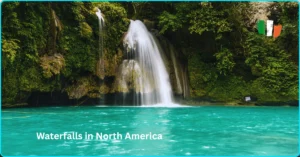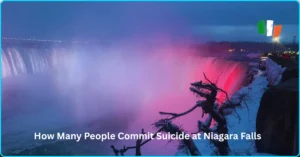I still remember my first time seeing Niagara Falls. The roar hit me before I even saw the water. My heart raced as I walked closer. Nothing prepared me for that moment when I reached the base of the falls. The mist soaked my face. The power was incredible.
North America holds some of the world’s most stunning waterfalls. From the thundering Horseshoe Falls to the delicate Bridal Veil Falls, this continent offers endless natural beauty. I’ve spent over fifteen years exploring these magnificent water features. My camera and I have traveled thousands of miles together.
You’ll discover the best waterfalls in North America through my personal journey. I’ll share the famous ones and hidden gems. Every waterfall has its own story. Each one changed how I see nature’s power.
The Crown Jewel: Niagara Falls
Niagara Falls stands as the most famous waterfall in America. Three waterfalls make up this natural wonder. The Horseshoe Falls dominates the scene. American Falls and Bridal Veil Falls complete the trio.
Horseshoe Falls – The Powerhouse
Standing at the base of Horseshoe Falls changed my life. The water crashes down 167 feet. About 6 million cubic feet of water flows over every minute. The sound drowns out everything else.
Horseshoe Falls is the largest of the three Niagara waterfalls. It’s 2,700 feet wide. Most of the water flows over this Canadian side. The curve shape gives it the horseshoe name. From the best vantage point, you see why it’s so famous.
I’ve photographed it from both sides. The Canadian side offers the classic view. The American side gets you closer to the action. Both views are breathtaking. The mist creates rainbows on sunny days.
American Falls and Bridal Veil Falls
These twin falls sit on the New York side. American Falls is 180 feet tall. It’s wider but carries less water than Horseshoe Falls. The American Falls offers a more intimate waterfall experience.
Bridal Veil Falls is the smallest of the three. It’s only 56 feet wide. The water appears like a delicate veil. This is where the name comes from. The falling water creates a magical effect.
I love how different these are from Horseshoe Falls. They’re gentler but still powerful. The rock formation behind them tells a geological story. Each visit reveals something new.
Visiting Tips from Personal Experience
The best time to visit Niagara Falls is late spring through early fall. I’ve been there in all seasons. Summer brings crowds but perfect weather. Fall offers fewer people and beautiful colors.
The Maid of the Mist boat tour is incredible. You get soaked but it’s worth it. Cave of the Winds takes you behind the falls. Both offer unique perspectives. I recommend doing both if possible.

Western Giants: Yosemite’s Spectacular Drops
Yosemite Falls ranks among the top waterfalls in North America. At 2,425 feet total, it’s one of the tallest. The waterfall has three sections. Upper Falls, Middle Cascades, and Lower Falls create this giant.
Yosemite Falls – California’s Towering Beauty
My hike to the top of Yosemite Falls tested my limits. The trail is steep and challenging. Eight miles round trip with serious elevation gain. But the view from the top is unreal.
Yosemite Falls flows strongest from April to June. Snow melt feeds the waterfall. By late summer, it often reduces to a trickle. I’ve seen it during peak flow and dry seasons. The difference is dramatic.
The best photography spots took me years to find. Valley View offers the classic shot. Swinging Bridge gets you closer. Glacier Point provides an aerial perspective. Each location tells a different story.
Bridal Veil Falls in Yosemite
This Bridal Veil Falls differs completely from Niagara’s version. Yosemite’s Bridal Veil Falls drops 620 feet in a single plunge. The water appears to float down the granite cliff. Wind often blows the water sideways.
It’s much more accessible than Yosemite Falls. A short, easy walk gets you to the base. Families love this waterfall. Kids can play in the mist pool safely.
I’ve photographed it in every season. Spring brings heavy flow. Summer creates perfect mist conditions. Fall offers golden light. Winter sometimes freezes parts of it.
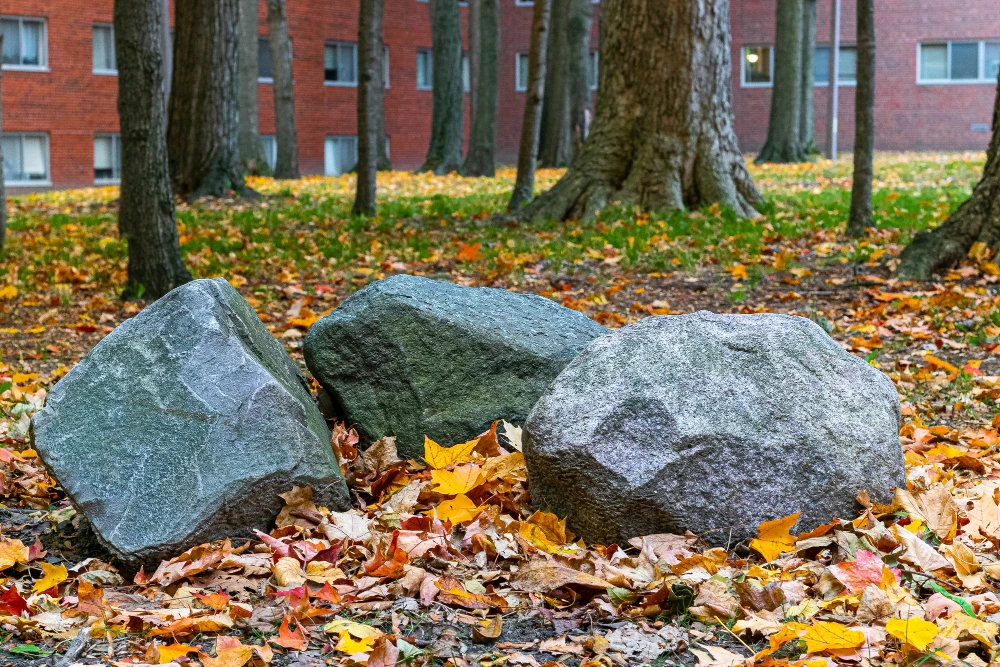
Hidden Gems in State Parks
State parks across North America hide incredible waterfalls. Many rival the famous ones. They’re often less crowded too. I’ve discovered some amazing falls in unexpected places.
Falls in Colorado – Rocky Mountain Surprises
Colorado surprised me with its waterfall diversity. Falls in Colorado offer mountain beauty with dramatic drops. The Colorado River system creates many spectacular waterfalls. High altitude means cold, clear water.
Hanging Lake Falls took my breath away. The hike is tough but short. The lake at the base glows turquoise. Fish Creek Falls near Steamboat Springs impressed me too. It’s easily accessible from town.
Seven Falls in Colorado Springs is unique. Seven separate waterfalls cascade down the canyon. The night lighting creates magic. I spent hours there with my camera.
Twin Falls Locations Across North America
Twin Falls appear throughout North America with similar names but different personalities. I’ve visited several Twin Falls locations. Each one offers something special.
Twin Falls in Idaho surprised me most. The Snake River creates dramatic canyons. Shoshone Falls nearby rivals Niagara for power. The desert setting feels otherworldly.
Twin Falls in Colorado offers mountain scenery. The hike is moderate but rewarding. Two parallel streams create the twin effect. Wildflowers bloom everywhere in summer.
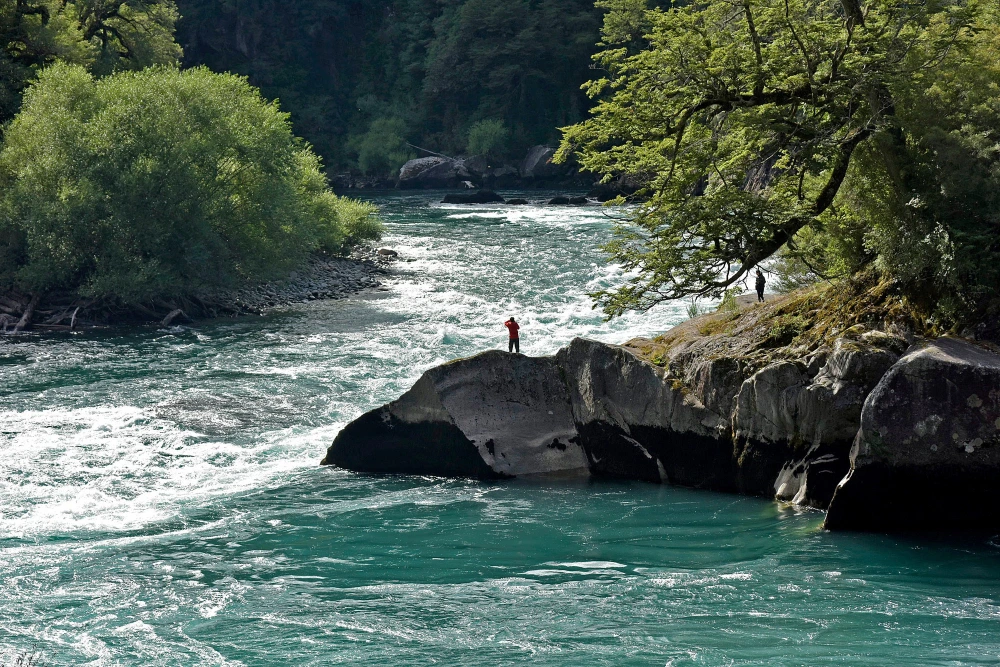
The Power of River Gorges
River gorges create the most dramatic waterfall settings. Millions of years of erosion carve these canyons. The result is stunning natural architecture. Water crashes through narrow spaces with incredible force.
Waterfalls Born from Geological Drama
My geology background helps me appreciate these formations. River gorges concentrate water flow into powerful displays. The narrow spaces increase pressure. This creates the most spectacular free falling water.
Linville Falls in North Carolina shows this perfectly. The river cuts through quartzite bedrock. Multiple viewpoints reveal different perspectives. The upper and lower falls each tell their story.
Ausable Chasm in New York offers similar drama. The river carved through solid rock. Multiple waterfalls cascade through the gorge. Walking the trail feels like time travel.
New York State’s Underrated Treasures
York State contains hundreds of spectacular waterfalls beyond Niagara. The Finger Lakes region holds many gems. Watkins Glen State Park amazed me completely. Nineteen waterfalls line the gorge trail.
Taughannock Falls drops 215 feet. It’s taller than Niagara Falls. The amphitheater setting is breathtaking. Few people know about this incredible waterfall.
Letchworth State Park earned the nickname “Grand Canyon of the East.” Three major waterfalls cascade through the gorge. The fall colors here are unmatched. I return every October without fail.

National Parks: Nature’s Showcase
National parks protect the best waterfalls in North America. Each park offers unique waterfall experiences. Different climates create different personalities. Planning multi-park trips maximizes your waterfall adventures.
Waterfall Diversity Across National Parks
My national park passport shows visits to over thirty parks. Each national park’s waterfalls reflect their unique environment. Glacier National Park offers ice-fed cascades. Yellowstone features geothermal-influenced flows.
Great Smoky Mountains contains over 200 waterfalls. Laurel Falls is paved and accessible. Rainbow Falls requires more effort but rewards visitors. Each one shows Appalachian beauty.
Zion National Park surprised me with desert waterfalls. Emerald Pools offers three different falls. The contrast of red rock and green water is stunning. Desert waterfalls have their own magic.
Free-Falling Spectacles
True free falling waterfalls create the most dramatic experiences. The water drops without touching rock. This creates the purest waterfall form. Wind often affects the water’s path.
Multnomah Falls in Oregon exemplifies this beauty. The water drops 620 feet in two tiers. The bridge offers perfect viewing. Columbia River Gorge holds dozens of similar falls.
Havasu Falls in Arizona requires permits and hiking. The turquoise water contrasts with red rock. It’s one of the most photographed waterfalls. The effort to reach it makes it special.
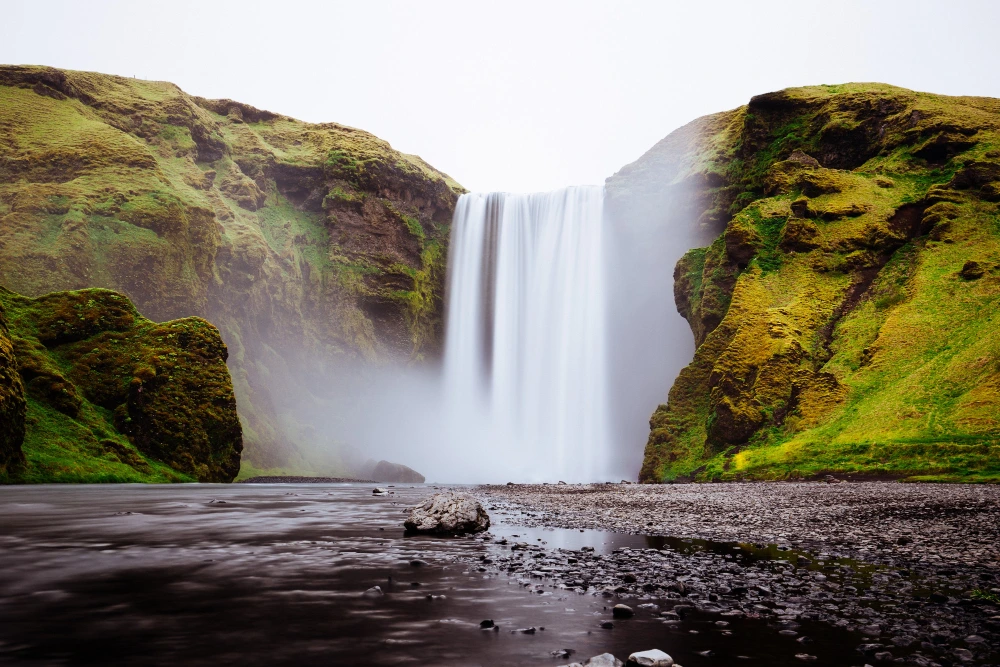
Planning Your Waterfall Adventure
Successful waterfall trips require careful planning. Weather affects flow rates dramatically. Seasonal timing can make or break your experience. I’ve learned this through trial and error.
Best Times to Visit Different Regions
Spring offers the best waterfall conditions across most of North America. Snowmelt feeds many waterfalls. Flows are strongest from April through June. Weather is usually cooperative too.
Summer brings crowds but reliable conditions. All trails are usually open. Photography lighting can be challenging midday. Early morning and evening offer better light.
Fall provides fewer crowds and beautiful colors. Some waterfalls reduce flow by autumn. High elevation falls may freeze early. Check conditions before traveling.
Photography and Viewing Tips
The perfect vantage point often requires exploring multiple locations. I always scout different viewpoints. Some waterfalls look best from below. Others shine from elevated positions.
Polarizing filters help cut glare on wet rocks. Neutral density filters smooth water motion. Tripods are essential for sharp images. Weather protection saves expensive gear.
Arrive early to avoid crowds. Popular waterfalls fill up quickly. Golden hour provides the best lighting. Patience often rewards photographers with perfect conditions.
Conclusion
Fifteen years of chasing waterfalls changed my perspective on nature. Each waterfall taught me something about patience, power, and natural beauty. From thundering Niagara to delicate desert cascades, every experience was unique.
These natural wonders need our protection and respect. Visiting responsibly ensures future generations can enjoy these spectacular waterfalls. Stay on marked trails. Pack out all trash. Follow Leave No Trace principles.
Start your own waterfall journey today. Choose one nearby and explore. The best waterfalls in North America wait to inspire your next adventure. Each one offers its own magic and memories.
Share your waterfall discoveries with others. Social media helps spread awareness and appreciation. Your photos might inspire someone else’s first waterfall experience. The circle of wonder continues through sharing.
Frequently Asked Questions
What is the largest waterfall in North America?
By volume, Niagara Falls is the largest waterfall in North America. About 700,000 gallons flow over every second during peak flow. Horseshoe Falls carries most of this water. The combined width exceeds 3,000 feet.
What is one famous waterfall in America?
Niagara Falls stands as America’s most famous waterfall. Located between New York and Ontario, it attracts millions of visitors yearly. The three falls create an unforgettable natural spectacle. Hollywood movies and tourism made it globally famous.
What are the 5 largest waterfalls in the world?
The world’s largest waterfalls include Angel Falls (Venezuela), Tugela Falls (South Africa), and Tres Hermanas Falls (Peru). North America’s Yosemite Falls ranks among the world’s tallest at 2,425 feet. Volume and height measurements create different rankings.
What is the biggest waterfall in Canada?
Horseshoe Falls at Niagara represents Canada’s biggest waterfall by volume. Most of Niagara’s water flows over the Canadian side. Takakkaw Falls in British Columbia is Canada’s second-highest at 1,260 feet. Both offer incredible experiences.
Which waterfalls are best for families?
Family-friendly waterfalls feature easy access and safe viewing areas. Lower Yosemite Falls requires only a short walk. Multnomah Falls offers paved trails. Many state parks design accessible waterfall trails specifically for families.
What’s the best time of year to visit waterfalls in North America?
Late spring through early summer provides optimal waterfall conditions. Snowmelt creates peak flows from April to June. Weather is usually cooperative for hiking. Fall offers fewer crowds but potentially reduced flows.
How do I prepare for waterfall hiking?
Waterfall hikes require proper footwear and weather preparation. Trails near waterfalls are often wet and slippery. Waterproof boots provide essential grip. Rain gear protects against mist and sudden weather changes.
Which waterfalls offer the best photography opportunities?
Waterfalls with multiple viewpoints offer the best photography options. Niagara Falls provides numerous angles. Yosemite Falls offers dramatic scale opportunities. Columbia River Gorge contains dozens of photogenic falls within short distances.


